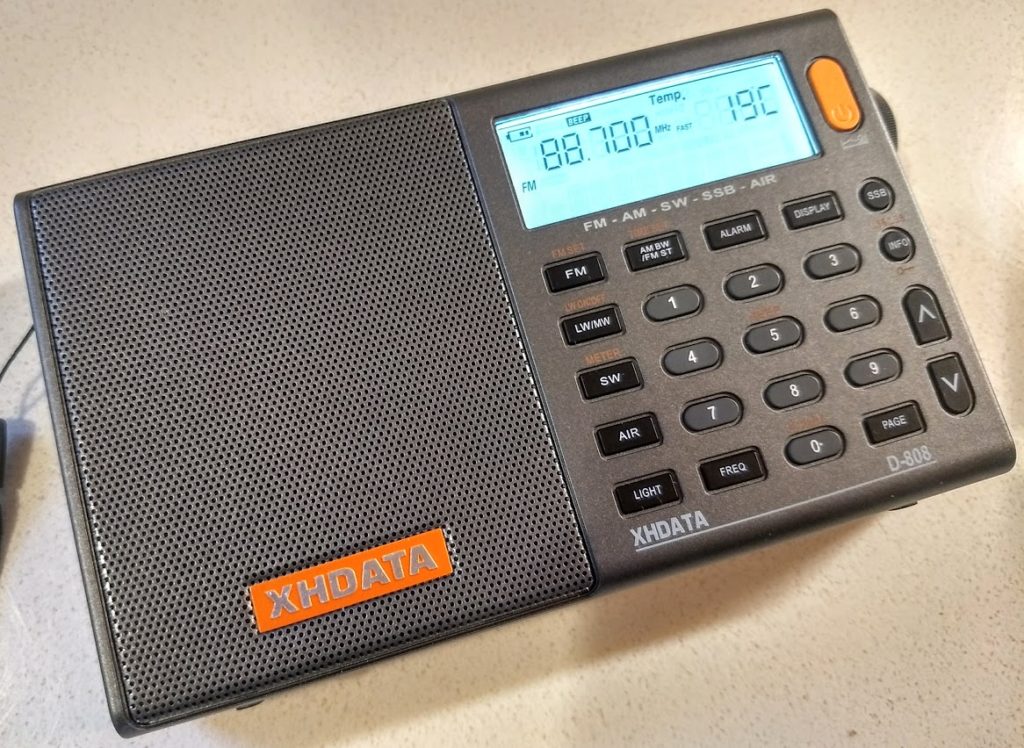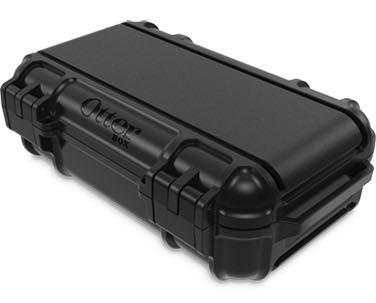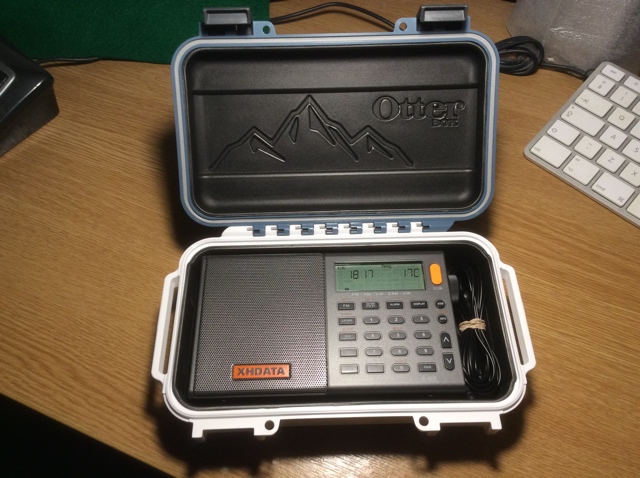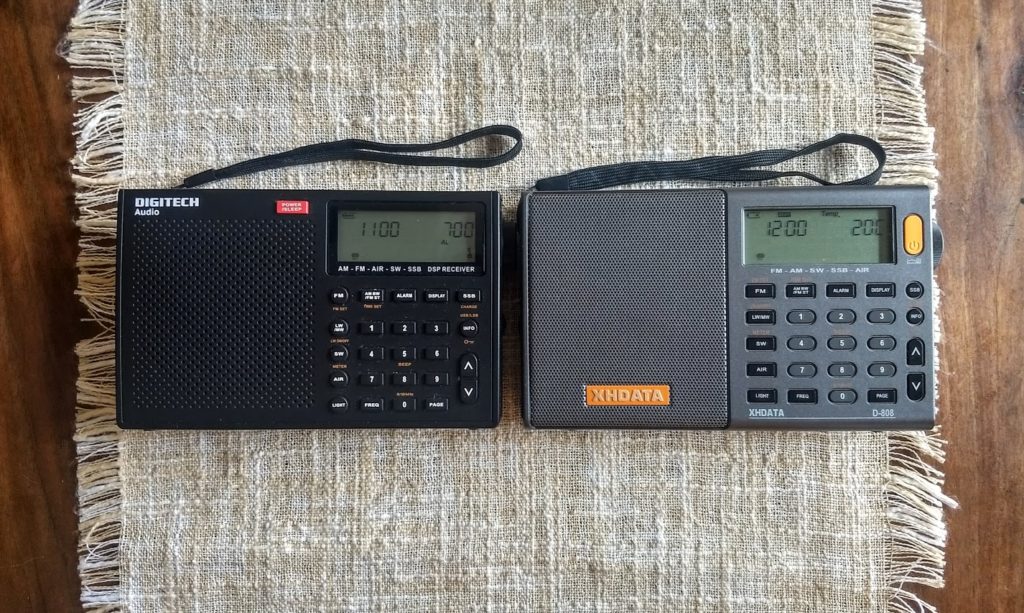
Digitech AR-1780 (left) and XHDATA D-808 (right)
Tuesday evening, I received my long-awaited XHDATA D-808 from AliExpress via the postal service. Yesterday morning, I unboxed it and started charging the included 18650 Li-Ion cell. I haven’t properly put it on the air yet but if you’re interested in some initial reports, check out these previous posts.
Dimensions
I was curious if the Digitech D-808 was identical in size to the Digitech AR-1780–I could tell even from D-808’s initial information that these two radios share a common ancestry.
To my surprise, they are not identical in dimensions! With that said, the differences are very marginal.
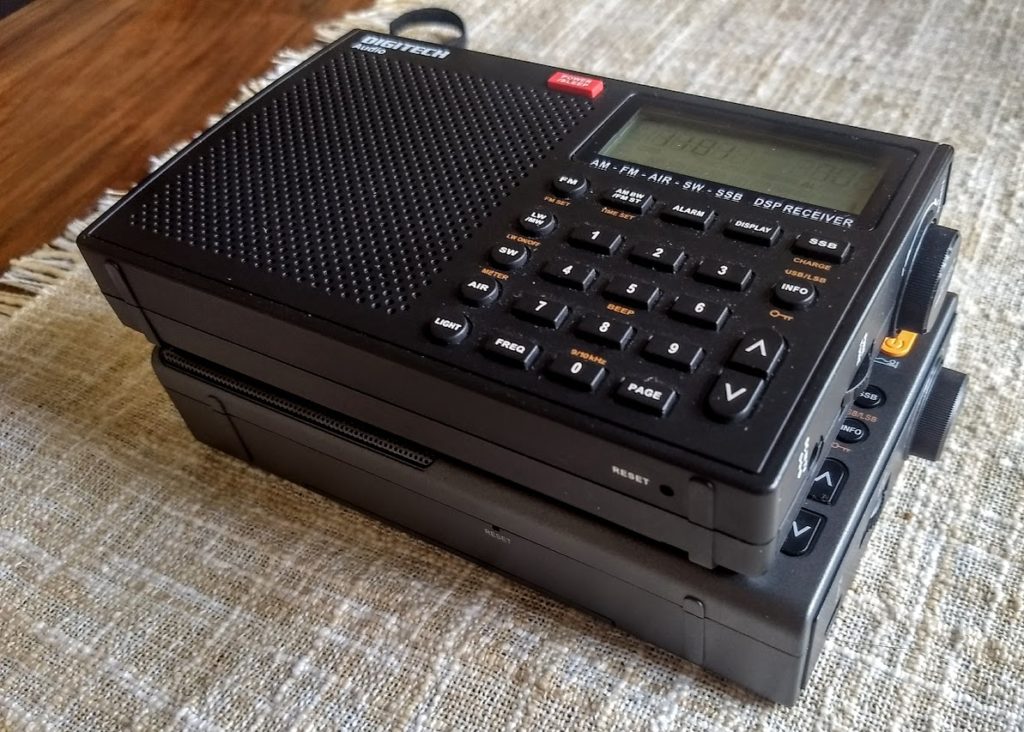
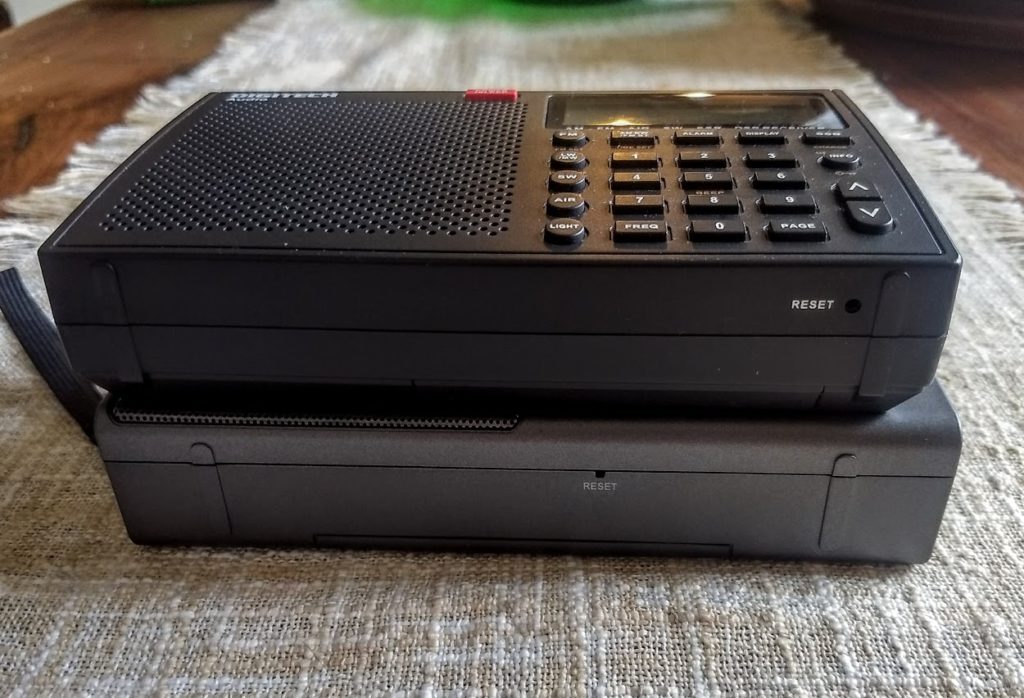
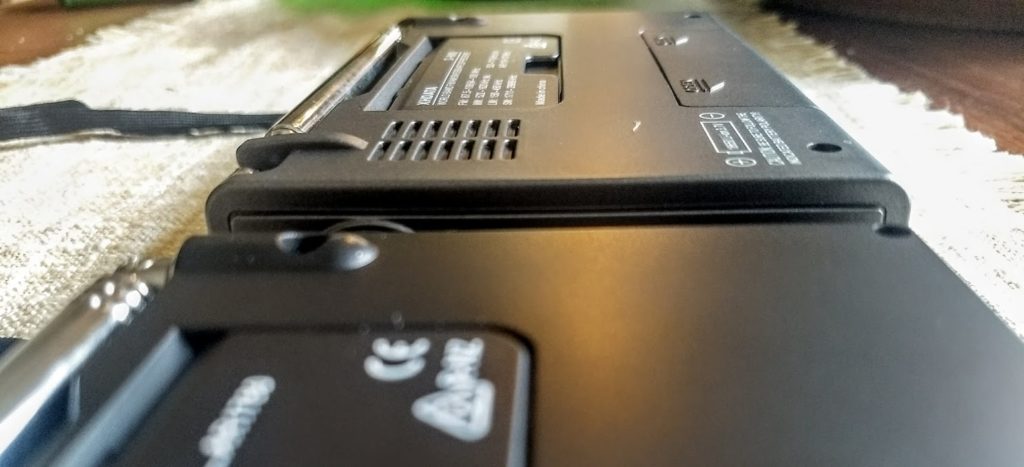
The D-808 is 7 mm wider and 2 mm deeper than the AR-1780.
To confirm measurements, I checked out the manufacturer specifications of both radios. Oddly, the specs also indicate that the AR-1780 should be 3 mm taller than the D-808 but I don’t detect this difference. I measure them to be equal in height.
The telescoping antennas are identical in height and number of segments.
Of course, as you can tell from the photos, the D-808 body is light grey in color while the AR-1780 is black.
Batteries
The Digitech AR-1780 uses four 1.5V AA cells while the XHDATA D-808 uses one less common 3.7V 18650 Li-Ion rechargeable cell (included).
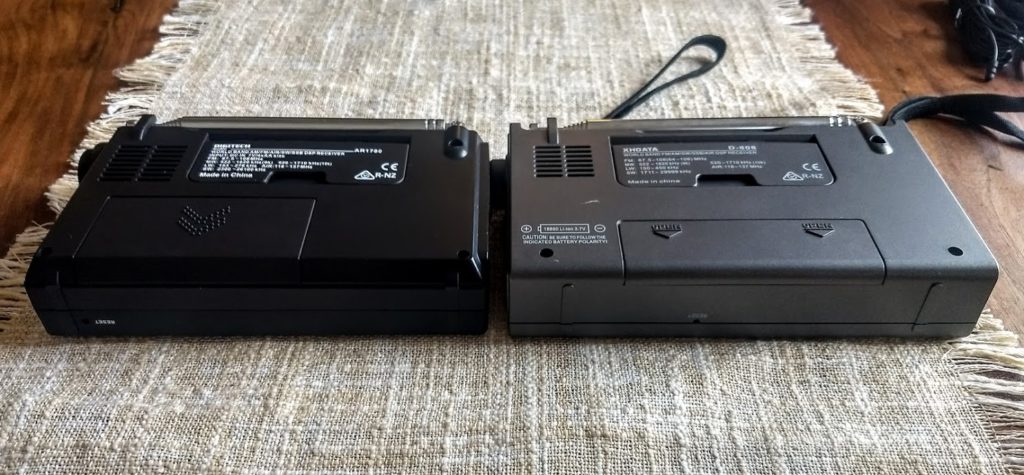
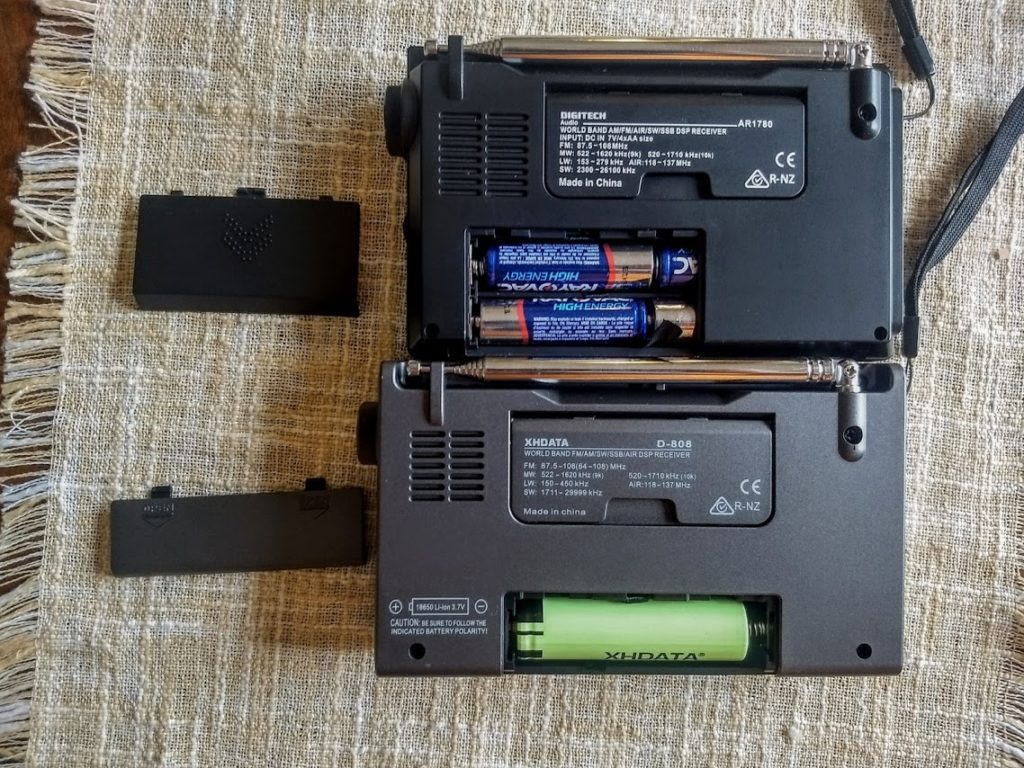
External Power
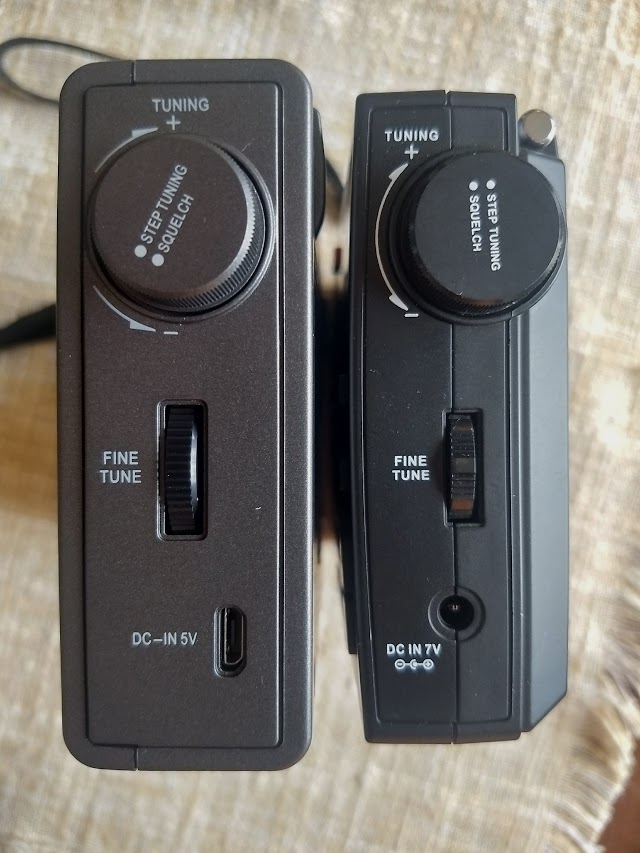
The XHDATA D-808 (left) and Digitech AR-1780 (right).
The XHDATA D-808 has a standard 5V Micro USB port for internal changing. The AR-1780, on the other hand, uses a much less common 7V DC plug.
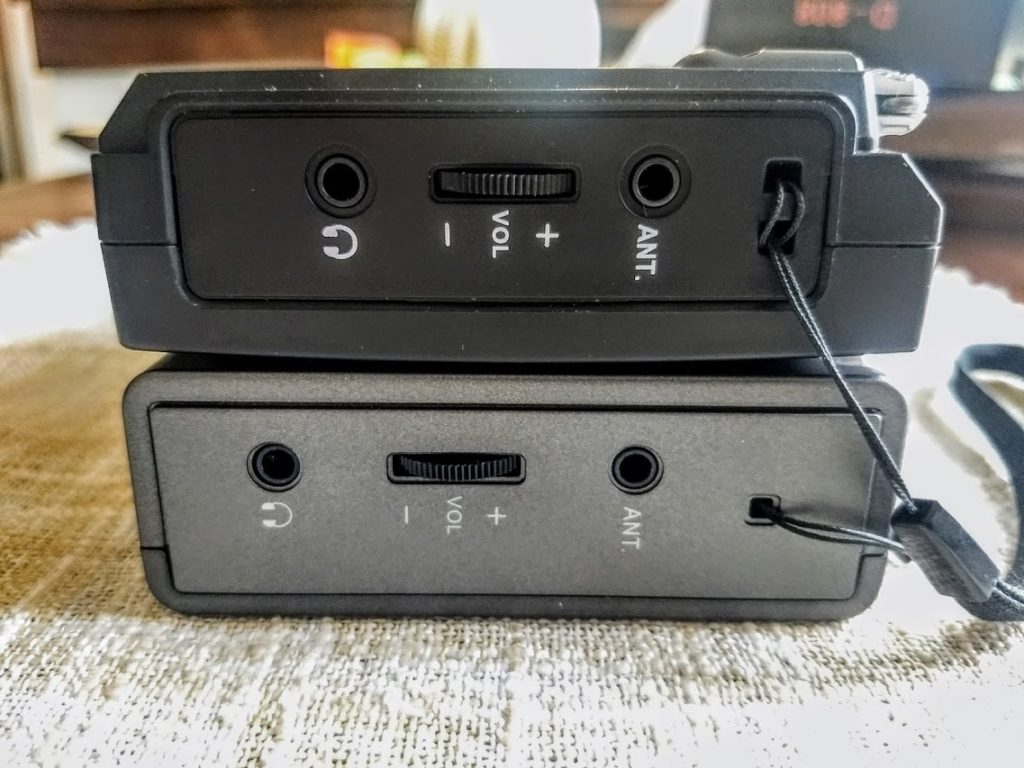
Right panels are identical.
Having a 5V micro USB port is a huge plus for the D-808, in my opinion! While travelling, I always have at least one micro USB charger.
Backlighting
The LCD display appears to be identical in size and display information, however the D-808 has blue backlighting while the AR-1780 has orange backlighting.
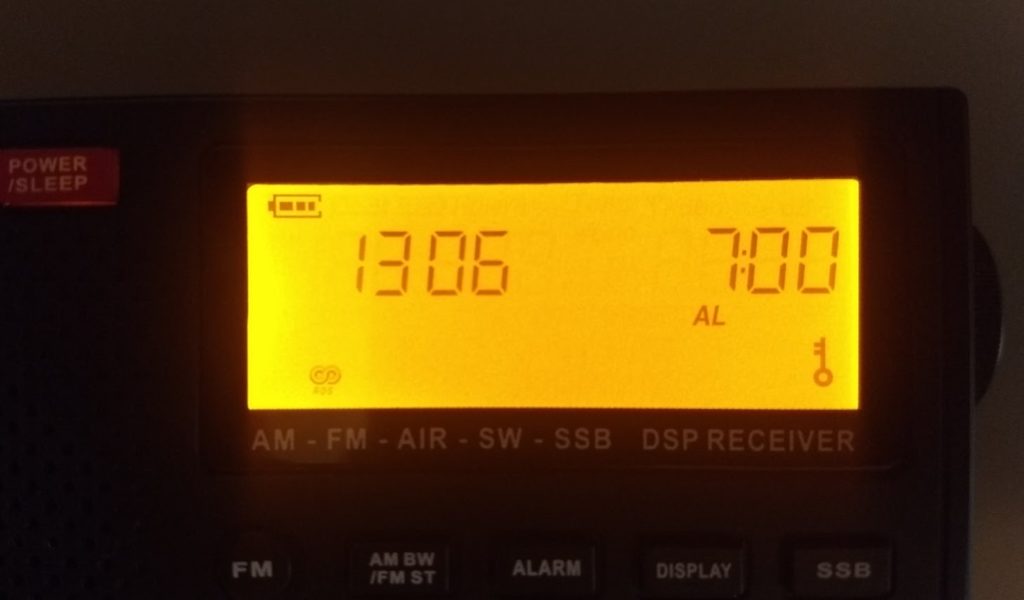
The Digitech AR-1780
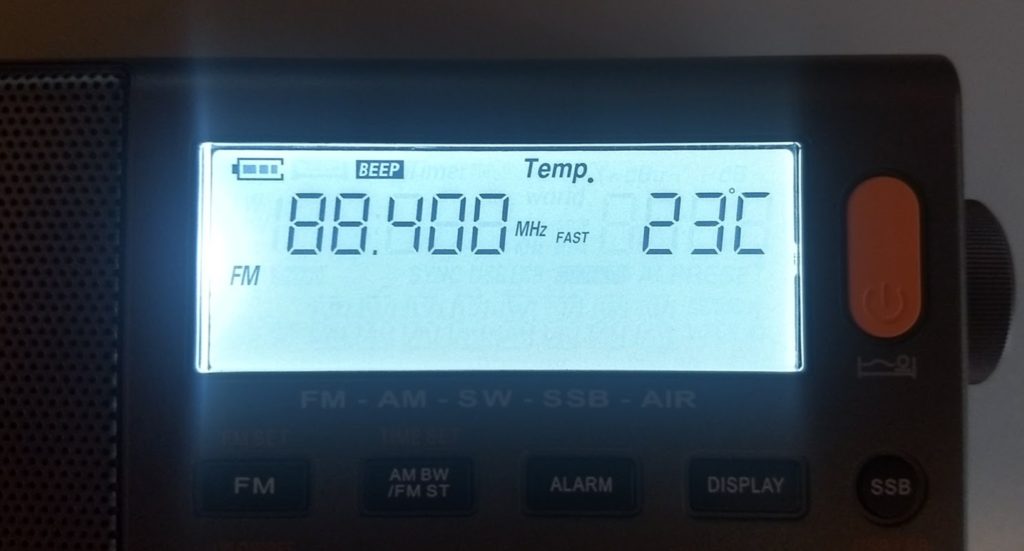
The XHDATA D-808
Keypad
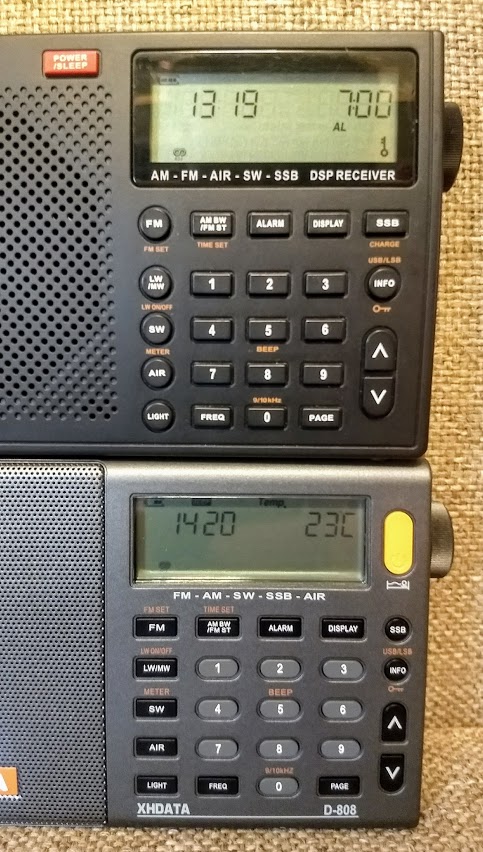
AR-1780 (top) D-808 (bottom)
Other than variations in button shapes and color, the only difference between the two radios is the location of the power button.
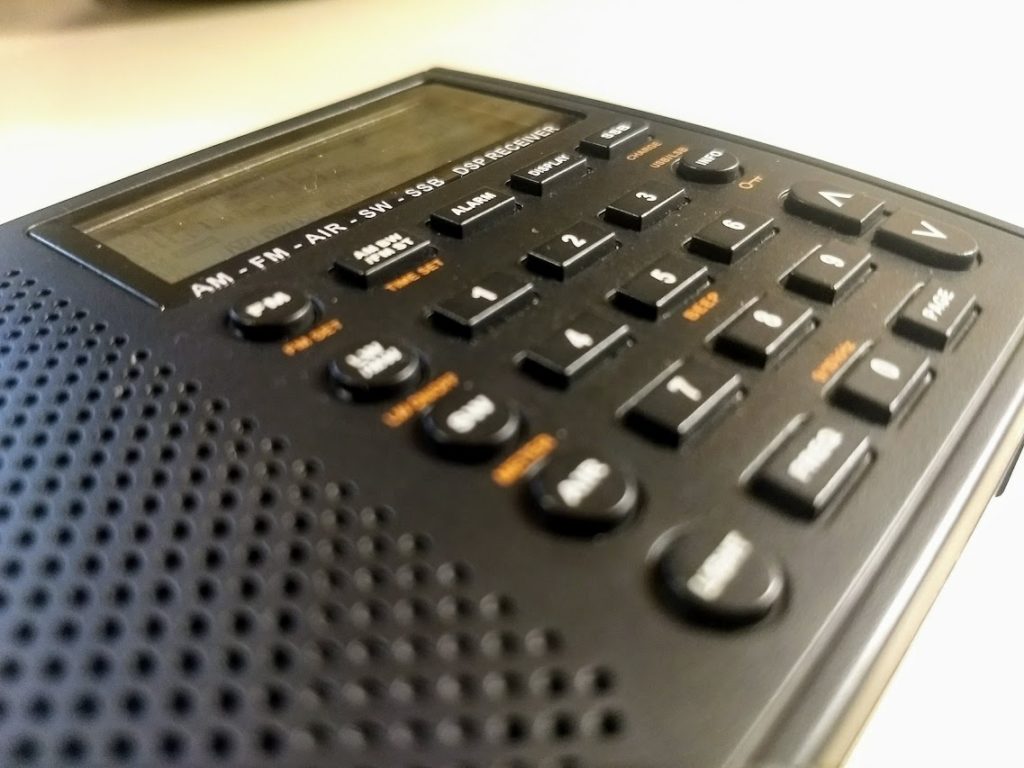
The Digitech AR-1780 keypad
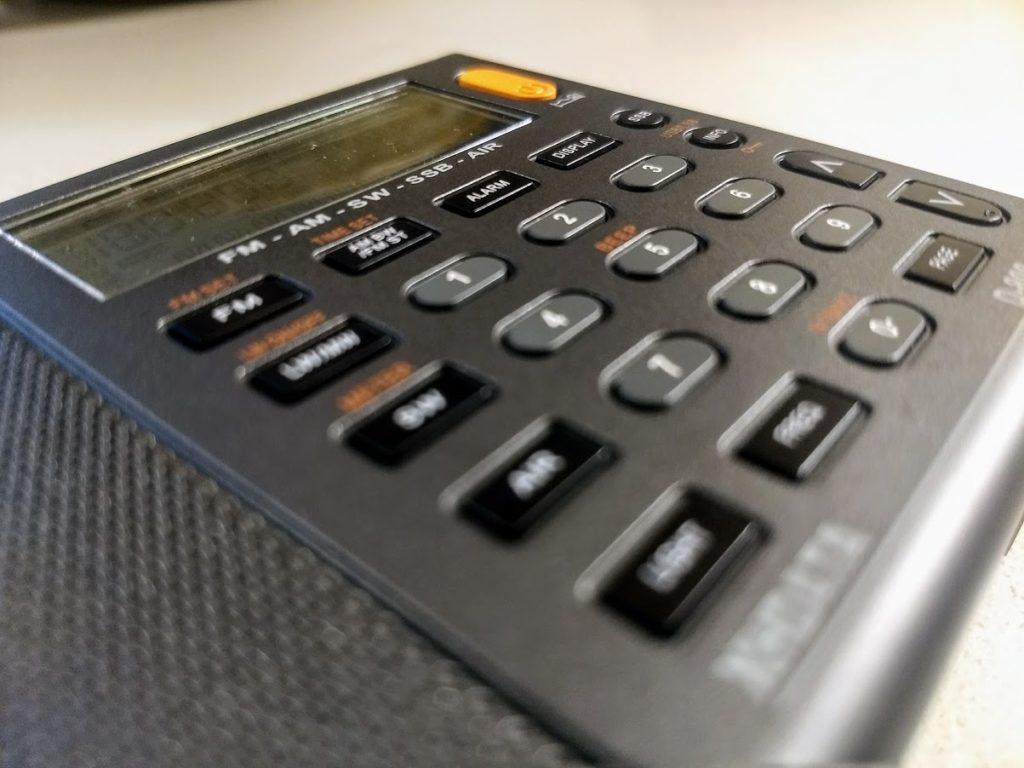
The XHDATA D-808 keypad
As Guy Atkins mentioned in a previous post, the D-808 keypad buttons are almost flush with the radio body. The buttons on the AR-1780, on the other hand, are more prominent and tactile.
Accessories
The Digitech AR-1780 shipped with no accessories–the only two items in the box were the radio and the owner’s manual.
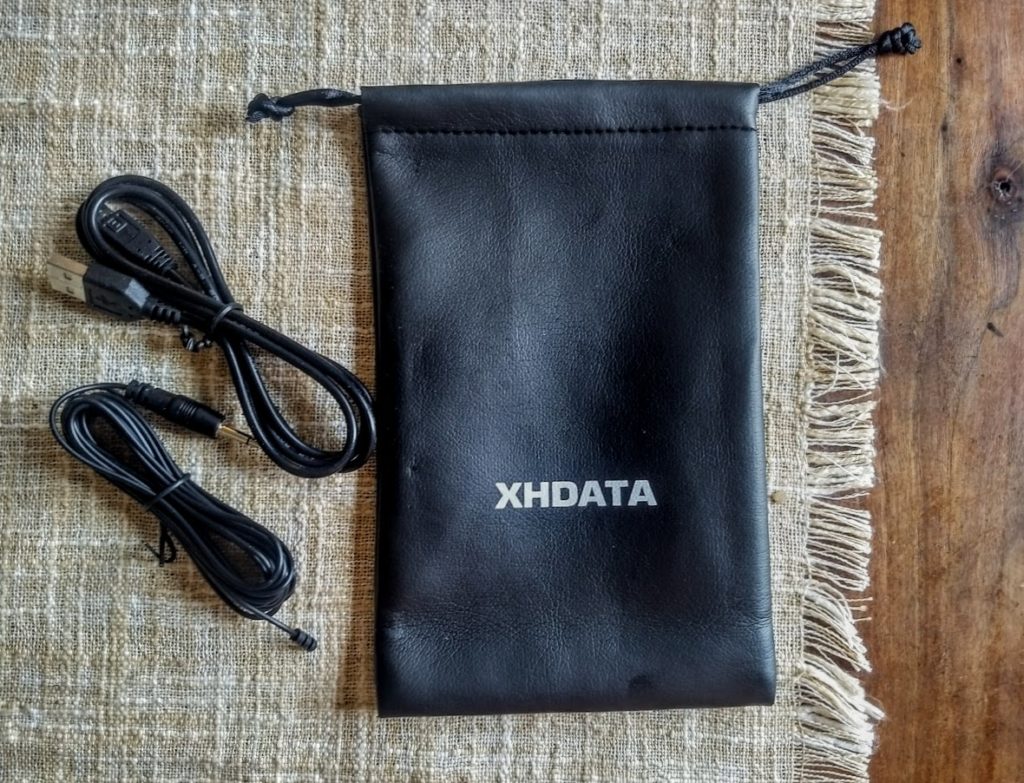
I was surprised when I opened the D-808 box to find a padded carry/travel bag, USB charging cable and even a compact external wire antenna.
Summary
There are actually few differences between the XHDATA D-808 and the Digitech AR-1780 in terms of physical appearance and function.
All in all, though, I prefer the D-808 package which ships with a carry bag, power cord and external wire antenna. In addition, the D-808 uses a standard and convenient Micro USB port for charging!
In terms of size/weight, the differences are negligible and wouldn’t sway my purchase decision.
Over the course of the next week, I hope to spend some time comparing their performance on the air. Though they appear to be from the same family, will one sibling outperform the other? We shall see!

